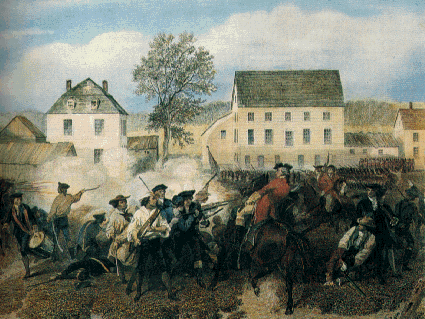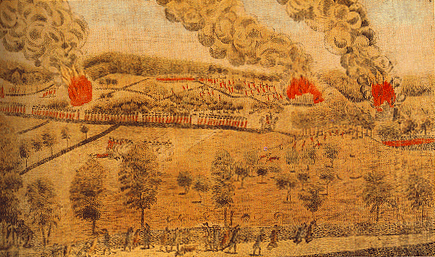|
The British held the City of Boston under military
rule because their troops were there. But they did not control the
surrounding countryside. Because the British could not enforce the
King's law outside of the city rebel militias began to form. The
Colony of Massachusetts was declared to be in a state of rebellion
by the British. Because of Britain's unequal treatment of the American
colonies, the rebels just needed a spark to arouse the colonists
against the British King. On April 18, 1775, the commander of British
forces, General Thomas Gage, Boston dispatched a contingent of 700
troops to Concord and Lexington. A distance of about fifteen miles
from Boston Common. They were commanded by Lieutenant Colonel Francis
Smith. The excuse was to seize leaders of the rebel cause, John
Hancock and Sam Adams. Other objectives were the seizure of gunpowder
and other supplies. The rebel Paul Revere, and a companion William
Dawes, set out to warn Hancock and Adams who were at Lexington.
Revere reached the town about midnight. Dawes arrived about a half
hour later. They were joined by Dr. Samuel Prescott. All three then
left for Concord. Both Dawes and Revere were captured on the way
to concord. Prescott escaped capture by leaving the road and making
his way to Concord by way of the countryside. Prescott was the one
who warned Concord. Advance British units, under the command of
Major John Pitcairn, reached Lexington at dawn. A group of about
seventy armed townsmen were gathered on the town common. Major Pitcairn
ordered them to disperse, as they did, a shot rang out. Who fired
the shot is unclear. The British responded with a volley of shots.
Eight colonists lay dead, one colonist and one soldier lay wounded.
After the bloody skimish, the British determined that John Hancock
and Sam Adams had fled. The British pushed onto their fateful confrontation
at Concord.
Tom Chirgwin
|






